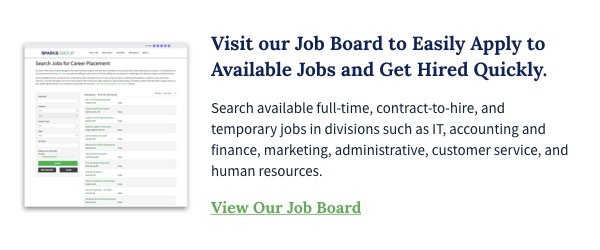
People, organizations, and communities are preparing to move into the next phase of the coronavirus pandemic - and many people who had just gotten used to working remotely will be expected to return to work. Whether you are returning to work on a part-time or full-time basis or returning to the workforce after a period of unemployment, one can experience emotional impact associated with returning to work post-COVID-19.
A recent study1 found that 65% of employees are nervous about returning to work. While changing routines – for example, from remote work to in-office – can be challenging, there are several actions that you can take to build resilience and make the transition easier.
Think Through Specifics
Uncertainty is likely to have a big impact on how employees feel about returning to work post-COVID. A good tactic to manage uncertainty is to think through the specific situations that are causing worry or stress and consider different ways to address these situations. Articulating specific things that are causing worry or stress can provide a sense of control, which helps to build emotional resilience. As you consider your return to work, it may help to think about:
Related Reading: How to Reskill Administrative Experience for Work From Home Jobs
1. Commute
Commuting by car will likely be a similar experience, although carpools may be a thing of the past, at least for now. Public transportation can be a source of concern, however, as it can be difficult to maintain social distancing. If this is on your mind, speak with your employer and see if there is a possibility that work schedules can be adjusted so that you can avoid rush hour commutes; or explore alternate means of transportation that you are more comfortable with.
If you formerly used a crowded elevator to reach your office or work space, think about building some extra travel time as a cushion in case you have to wait a while longer for a less-crowded elevator. You may also consider gloves, or a tool that can be used to push buttons and open doors to avoid the spread of germs.
2. Personal Workspace
Considering the heightened concern with hygiene, many companies are reconsidering open offices and looking to restructure workspaces to provide personal space, increased distance, or barriers between desks. Again, speak to your employer openly about your concerns, and find out what the plan is to manage the potential spread of infection at the office.
CDC recommendations include maintaining physical distance and wearing masks wherever possible. Ask if your employer will provide masks and other PPE at work or get some for your own use: look at comfort, and consider bringing spares in case you need to change them out during the day.
Related Reading: Job Application Strategies After the Pandemic Subsides
3. Common / Shared Spaces
Your employer should have a plan for common areas at the office such as: reconfiguring setup to support social distancing; scheduling breaks in shifts to reduce the number of people in a break room at once, or limiting the number of people that can be in a conference room at once.
Once you know the plan, consider actions that you can take to increase your comfort level with using shared spaces at the office: perhaps bringing hand sanitizer, using a tool to open doors, and having lunch at your desk rather than in a lunch room could make you feel better.
4. Develop a Routine
Over the past few months, as circumstances changed, our regular daily routines changed will change as well. However, adapting a routine is one of the best ways to develop a sense of control over your activities: and breaking down a day into manageable pieces, helps to reinforce structure and regulation which can help reduce anxiety.
A manageable routine to help with the emotional impact of returning to work may include: keeping a regular sleep schedule, taking consistent work breaks, participating in outdoor activities, and keeping up with hobbies / enjoyable pastimes during off-hours.
5. Communicate
A common thread through all of these recommendations is making sure that you communicate with your employer. Sharing your feelings on returning to work is not only a great way to articulate and define those emotions, so that they can be addressed - it also offers your employer the chance to offer solutions that they’ve already considered (or consider solutions, if they haven’t yet.) You may want to ask what, if any PPE will be employer-provided, or if the company will provide hand sanitizer, cleaning wipes, tissues, and other hygienic products. If you have a customer-facing job, for example in retail, you should find out what forms of payment will be accepted, what the employer policy on masks and social distancing will be, and whether there will be a protective guard between employee and customer.
While there is still a lot of uncertainty about the future and many factors that are outside of our individual control, there are ways to be proactive, and approaches that can be taken to help cope with the emotional impact of the changes that are to come.
Related Reading: How to Return to Work in the Absence of Daycare / Summer Camp
If you are currently out of work or are considering a career change, Sparks Group can help. Our team of expert recruiters have decades of proven success in matching candidate to company, providing guidance and helping you showcase your skills and experience in the most effective manner. Visit our job portal for a list of available full-time, contract-to-hire and temporary positions at leading companies nationwide.
Sources:
[1]. https://www.safetyandhealthmagazine.com/articles/19800-covid-19-pandemic-most-people-uneasy-about-returning-to-work-survey-finds






